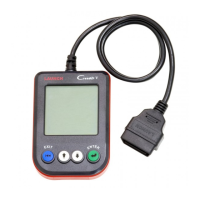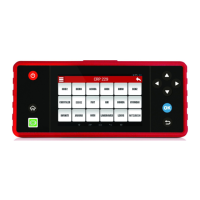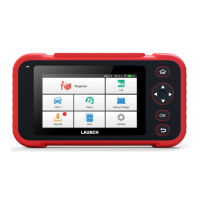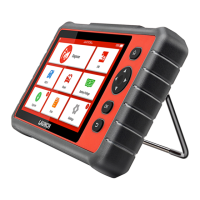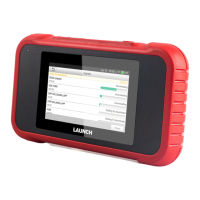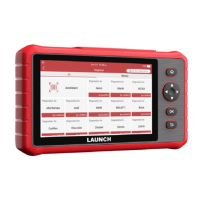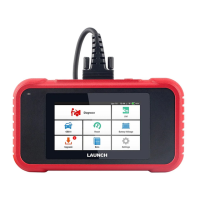LAUNCH 629 User's Manual
13
www.x431.com +86 755 8455 7891
Heated Catalyst Monitor performs the same diagnostic tests as the catalyst
Monitor, and also tests the catalytic converter’s heater for proper operation.
The Heated Catalyst Monitor is supported by “spark ignition” vehicles only.
This Monitor is also a “Two-Trip” Monitor.
5. EGR (Exhaust Gas Recirculation) System Monitor
The Exhaust Gas Recirculation (EGR) system helps reduce the formation
of Oxides of Nitrogen during combustion. Temperatures above 2500°F
cause nitrogen and oxygen to combine and form Oxides of Nitrogen in
the combustion chamber. To reduce the formation of Oxides of Nitrogen,
combustion temperatures must be kept below 2500°F. The EGR system
recirculates small amounts of exhaust gas back into the intake manifold,
where it is mixed with the incoming air/fuel mixture. This reduces combustion
temperatures by up to 500°F. The computer determines when, for how long,
and how much exhaust gas is recirculated back to the intake manifold. The
EGR Monitor performs EGR system function tests at preset times during
vehicle operation.
The EGR Monitor is supported by both “spark ignition” vehicles and
“compression ignition” vehicles. The EGR Monitor is a “Two-Trip” Monitor. If
a fault is found on the first trip, the computer temporarily saves the fault in
its memory as a Pending Code. The computer does not command the MIL
on at this time. If the fault is sensed again on the second trip, the computer
commands the MIL “On,” and saves the code in its long-term memory.
6. EVAP System Monitor
OBD II vehicles are equipped with a fuel Evaporative system (EVAP) that
helps prevent fuel vapors from evaporating into the air. The EVAP system
carries fumes from the fuel tank to the engine where they are burned during
combustion. The EVAP system may consist of a charcoal canister, fuel tank
cap, purge solenoid, vent solenoid, ow monitor, leak detector and connecting
tubes, lines and hoses.
Fumes are carried from the fuel tank to the charcoal canister by hoses or
tubes. The fumes are stored in the charcoal canister. The computer controls
the ow of fuel vapors from the charcoal canister to the engine via a purge
solenoid. The computer energizes or deenergizes the purge solenoid
(depending on solenoid design). The purge solenoid opens a valve to allow
engine vacuum to draw the fuel vapors from the canister into the engine where
the vapors are burned. The EVAP Monitor checks for proper fuel vapor ow to
the engine, and pressurizes the system to test for leaks. The computer runs
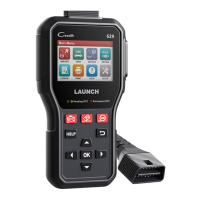
